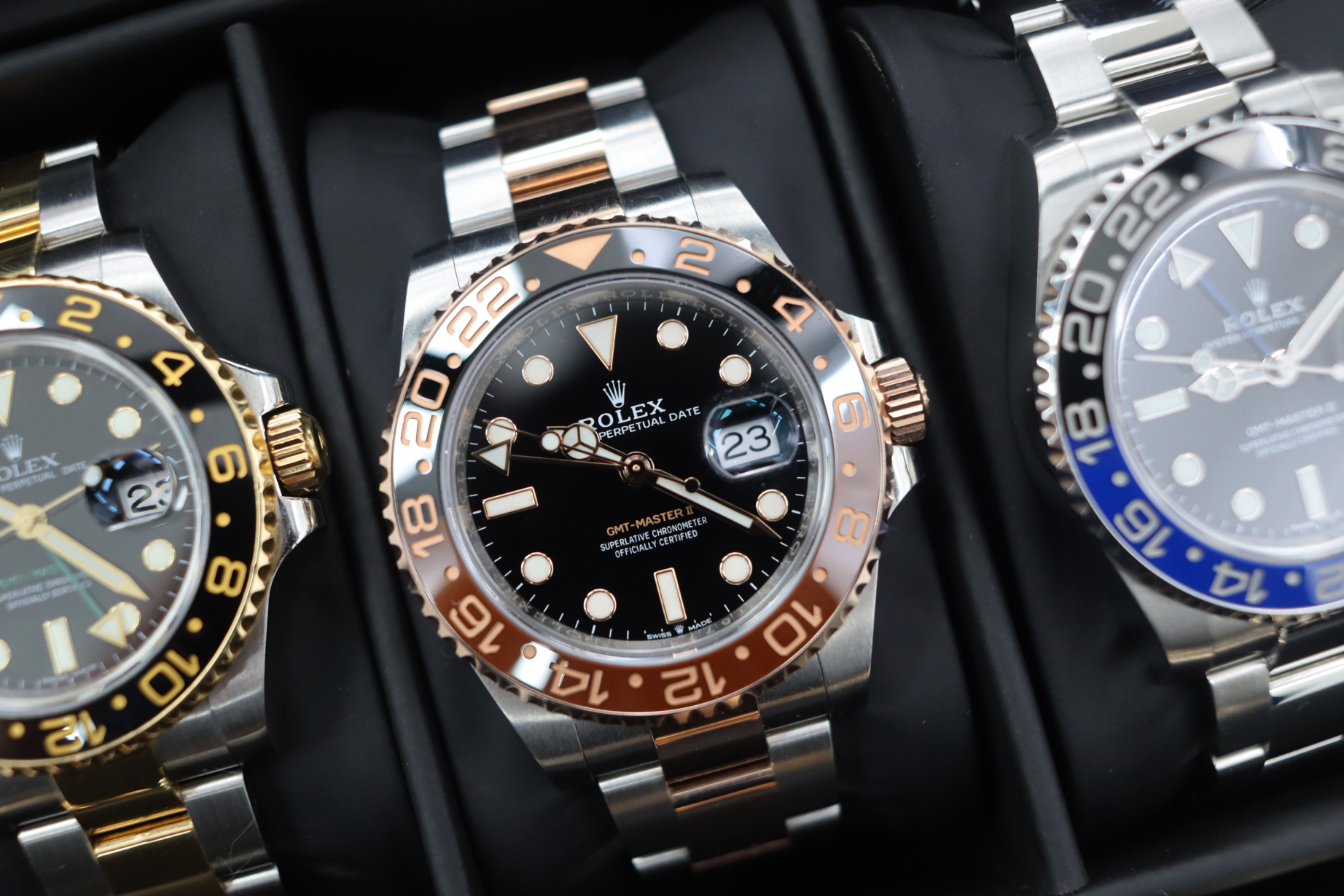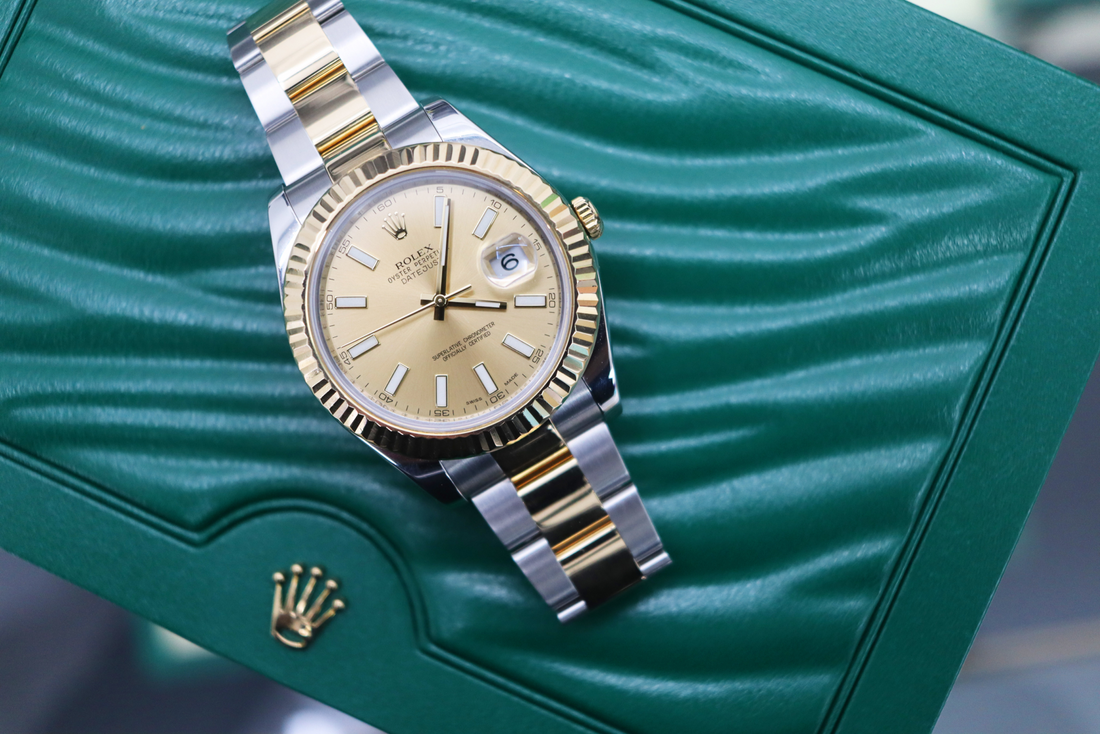

40 million.
That’s how many counterfeit watches are released into circulation every year, according to The Swiss Customs Service.
And Rolex has been the number one victim for the last two years. As demand for the brand surges, Rolex has become one of the most commonly counterfeited watch brands in the UK.
There’s now a thriving market for replica Rolex watches, and counterfeiters are pouring more money into making better fakes. The key problem? You can’t always spot a fake Rolex just by looking at it.
Buying a watch is a considerably emotional and time-consuming investment. If you’re in the market for a new or used Rolex, imagine how devastated you’d be if it turned out to be ingenuine.
This guide covers how to authenticate a Rolex, so you can be sure you’re not adding a dud to your collection.
The Rolex authenticity checks you can do at home
Rolex embodies pure luxury that even the best counterfeiters can’t forge. But some of them make a good attempt.
Ultimately, quality sets a real Rolex apart from a fake. So, if you know where to look, you can usually spot a fake Rolex with some simple visual checks Follow this guide on how to authenticate a Rolex, even if you’re not an expert.
STEP 1
Examine the famous logo
The unmistakable Rolex logo (which has been nicknamed “Bart Simpson” and the “Frog Foot” at times) is a reflection of the brand’s commitment to luxury and precision.
Every detail, from the famous crown to the impeccable typography, has been meticulously crafted on every Rolex timepiece.
And that’s why it’s a perfect first step when trying to tell if a Rolex is real.
The logo is crowned at the top of the dial of every genuine Rolex watch. Any decent fake will copy this detail, but they probably won’t be able to copy the precise placement and laser-sharp etching that exists on a real Rolex.
If you notice any flaws, such as misalignment, visible glue residue or slightly blurred lettering, drop the watch.
Counterfeiters use cheaper materials that considerably lighten the load.
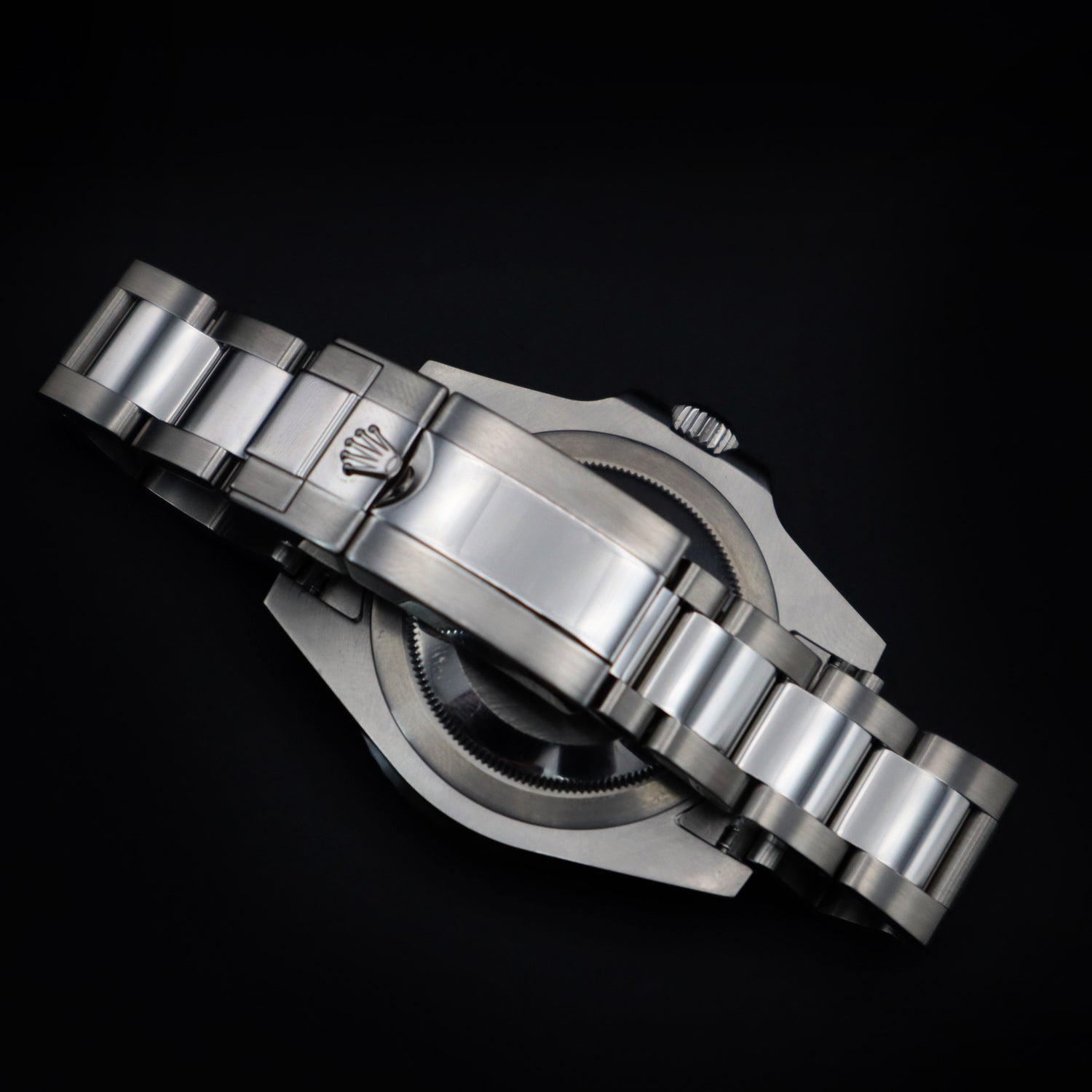
STEP 2
Make sure it has a metal case back
Unlike many other luxury watch brands, Rolex usually does not exhibit its timepieces' inner workings through their case backs.
Of course, there are exceptions, such as the brand’s 1930s vintage collections and the 60th-anniversary edition of the platinum Daytona, but Rolex watches generally feature solid metal case backs. A transparent case back could actually reveal a fake.
Rolex case backs are usually free from engravings, too. So flip your watch around and make sure the case back is solid and smooth.
All markings, including the logo, should be crisp and clear with consistent measurements and spacing. They’ll never wear or fade away.
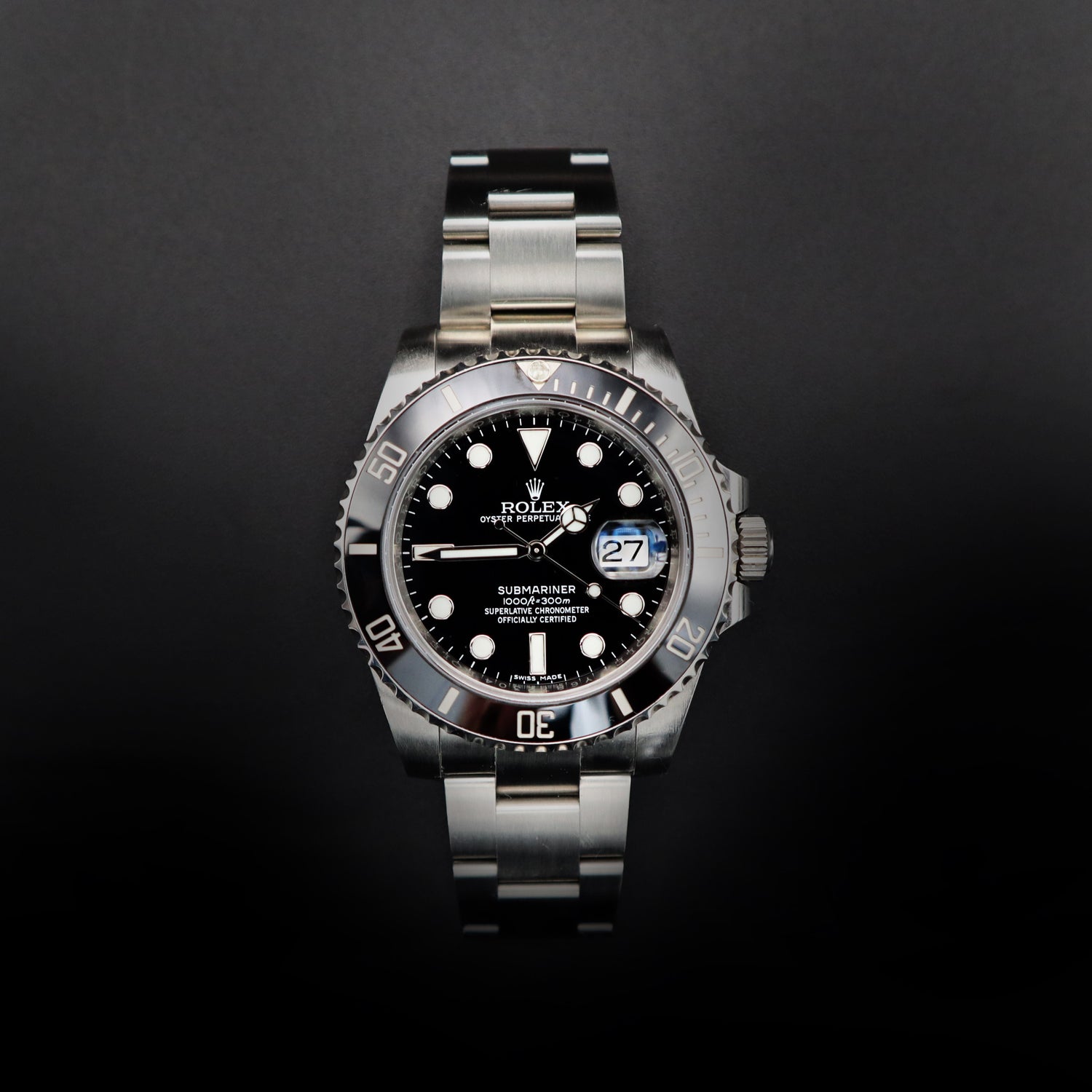
STEP 3
A smooth seconds hand
Rolex movements create a smoother sweep of the seconds hand compared to cheaper, quartz watches.
On a fake Rolex, those tiny fast ticks become more obvious and stuttered. You’re likely to see the seconds hand ticking along, which is a clear sign of corner-cutting in low-cost watches.
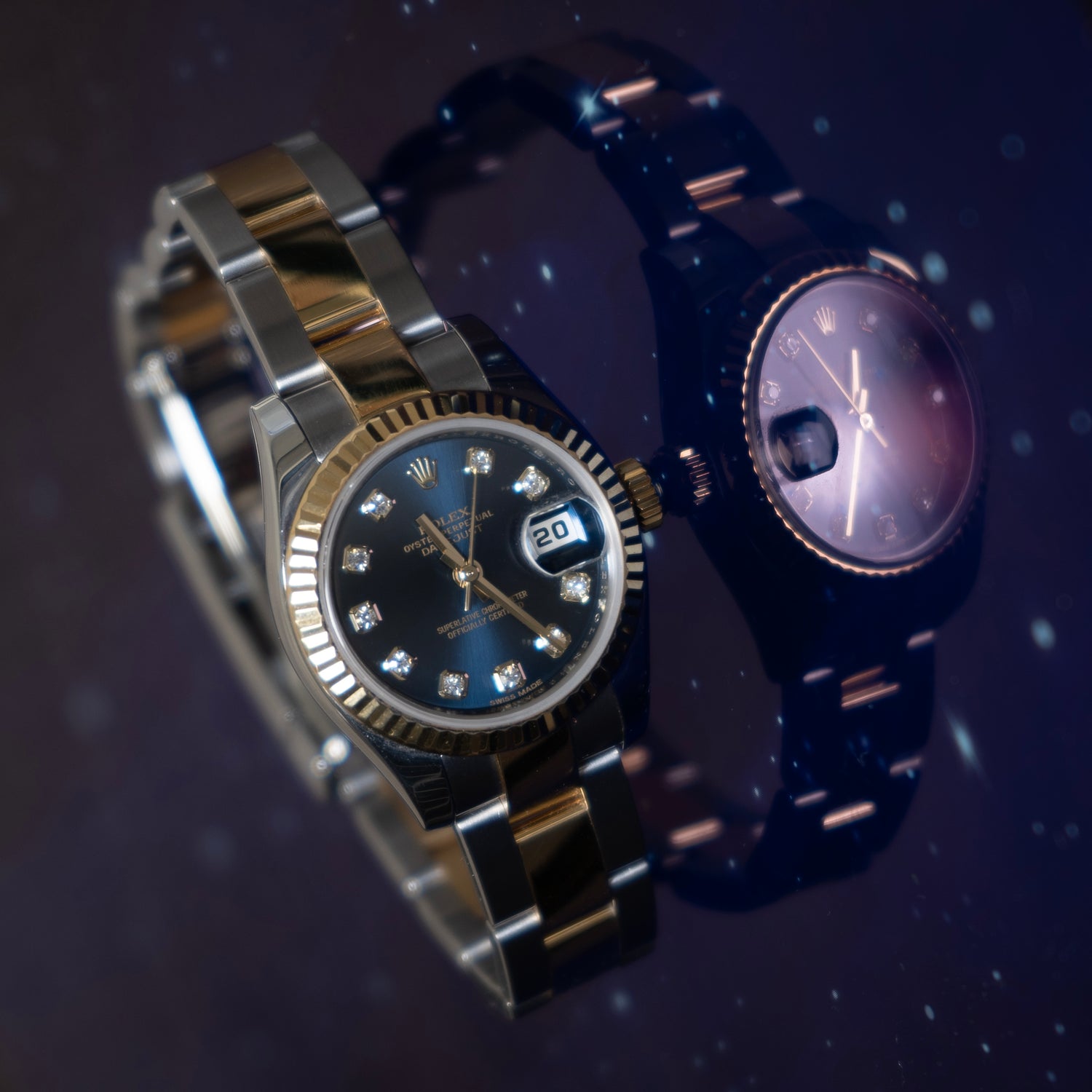
STEP 4
Is it quiet?
Put your watch to your ear. Can you hear it ticking?
You can usually tell if a Rolex is original because its seconds hand is silent as well as seamless. This soundless motion is extremely hard to replicate.
If that old-school tick-tock is loud or erratic, it’s a tell-tale sign of a counterfeit watch.
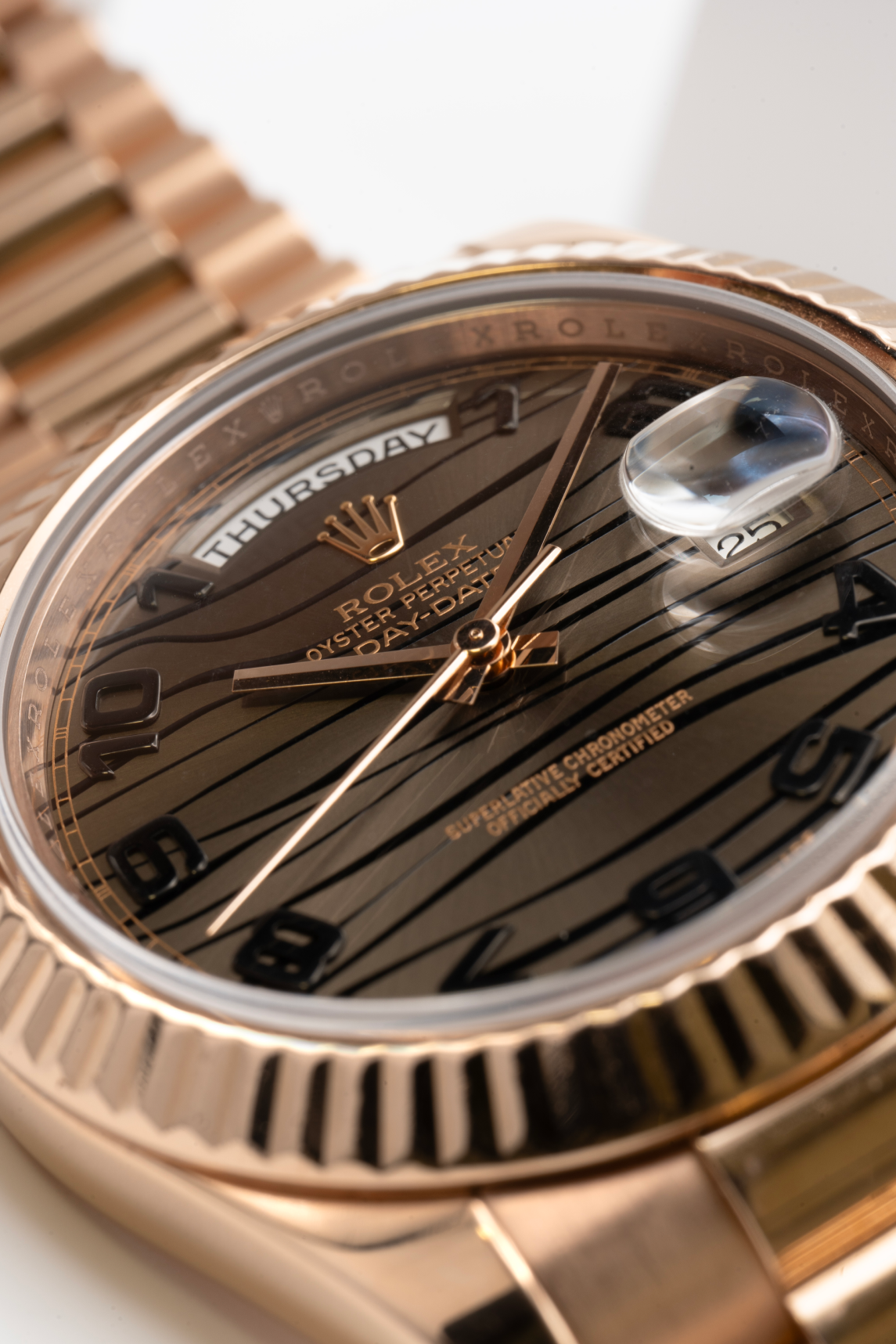
STEP 5
Check the date display, or the “Cyclops”
The date display on a genuine Rolex should have a magnifying glass over the date window, known as the “Cyclops”. This glass magnifies the date by 2.5X.
While counterfeiters can bring the magnifying glass element into their creations, they don’t always get it right.
The idea behind the Cyclops is to make reading the date effortless. So, if your watch’s glass doesn’t enlarge the date quite as much as it should, is slightly out of place, or is anything but flawless, it might not be real.
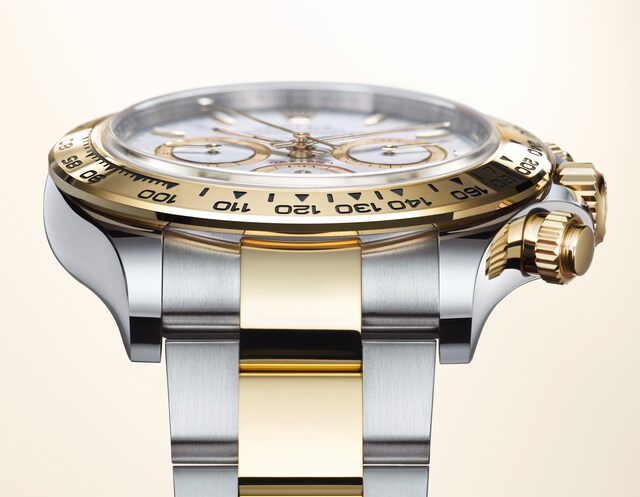
STEP 6
Look closely at the dial
An original Rolex watch is perfect down to the very last detail.
Get up close and personal with the dial when authenticating a Rolex. The font should be exceptionally clear and precise, the spacing between lettering should be exact, and there should be zero smudges or imperfections.
The counterfeit market can’t reproduce the immaculate standard Rolex is renowned for. So, if anything looks even slightly out of place, see it as a warning sign.
When you buy a second-hand Rolex, some wear and tear on the outer casing of the watch is natural. However, if the dial itself is damaged or appears to be poorly produced, the timepiece is unlikely to be authentic.
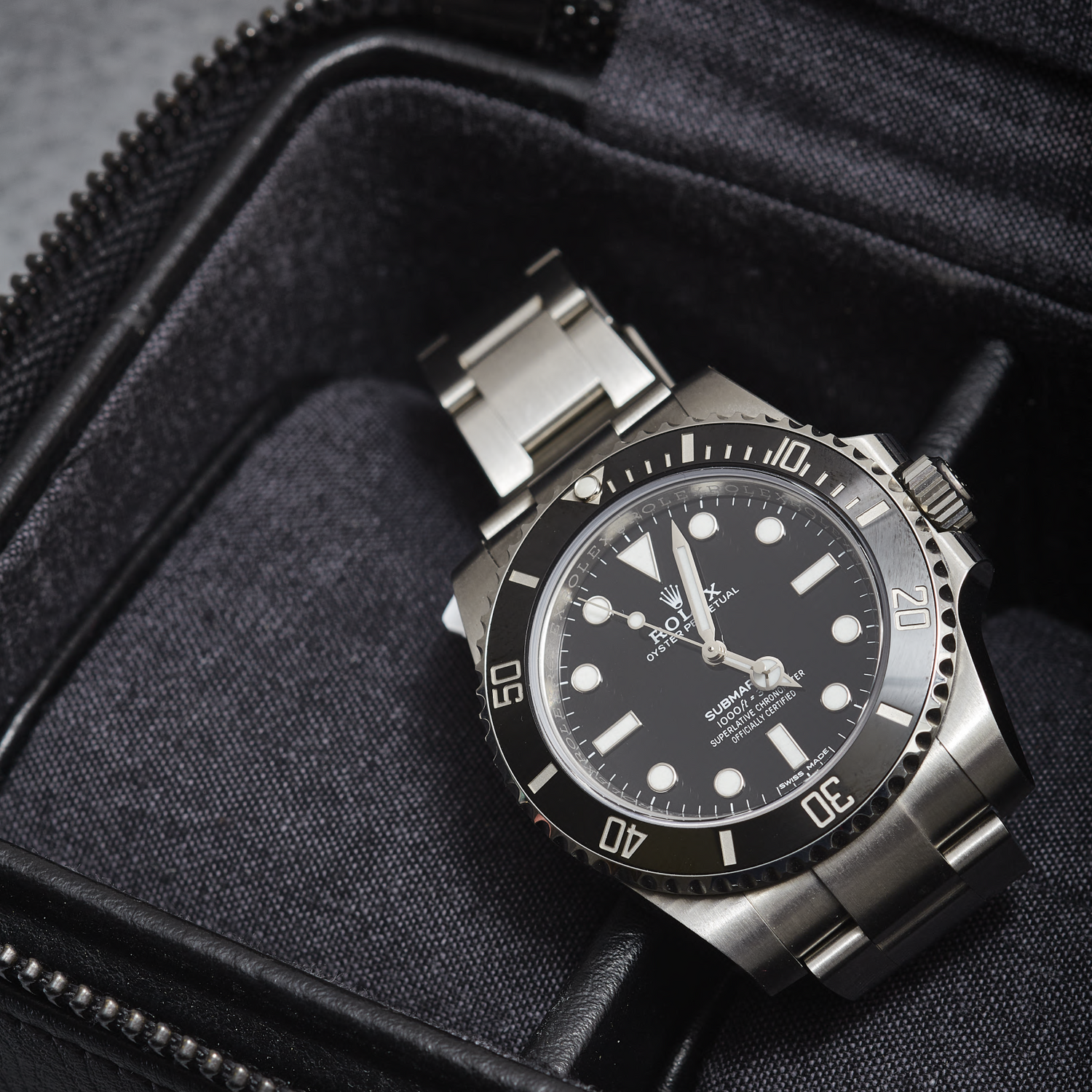
STEP 7
Check the weight
Holding the watch in your hand is a quick way to assess if it’s real.
Genuine Swiss watches are heavy. They’re crafted with exceptional materials and components, with complications that stand them a cut above the rest. That means a genuine Rolex will have considerable weight behind it, while fakes made from cheap materials tend to be suspiciously light.
Stainless steel Rolex watches are lighter than some other materials. Even then, your watch shouldn’t weigh less than around 100g, with larger models such as the Sky-Dweller and Day-Date reaching around 170-200g.
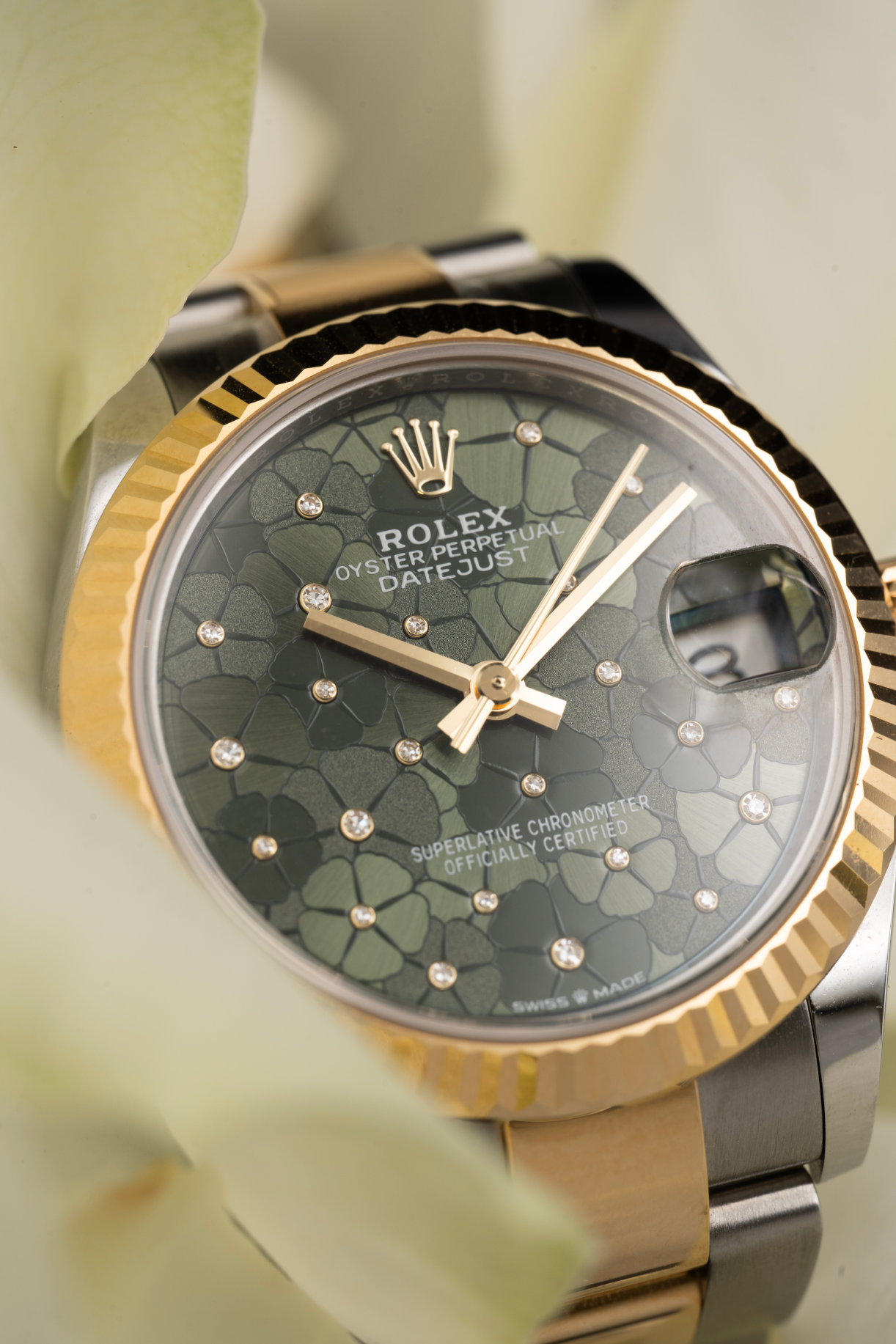
STEP 8
Micro-etched crystal logo
Let’s go back to the face, but this time look even closer. From 2002, Rolex began adding a subtle feature to its crystal: A small, micro-etched logo at 6 o’clock.
This feature is almost invisible to the naked eye, so you may need to grab a magnifying glass and achieve the right light to find it. This is an incredible Rolex authenticity marker.
The sheer precision involved in the creation of these logos makes it almost impossible to replicate them. If you buy a Rolex produced since the turn of the millennium, this is a security detail worth searching for.
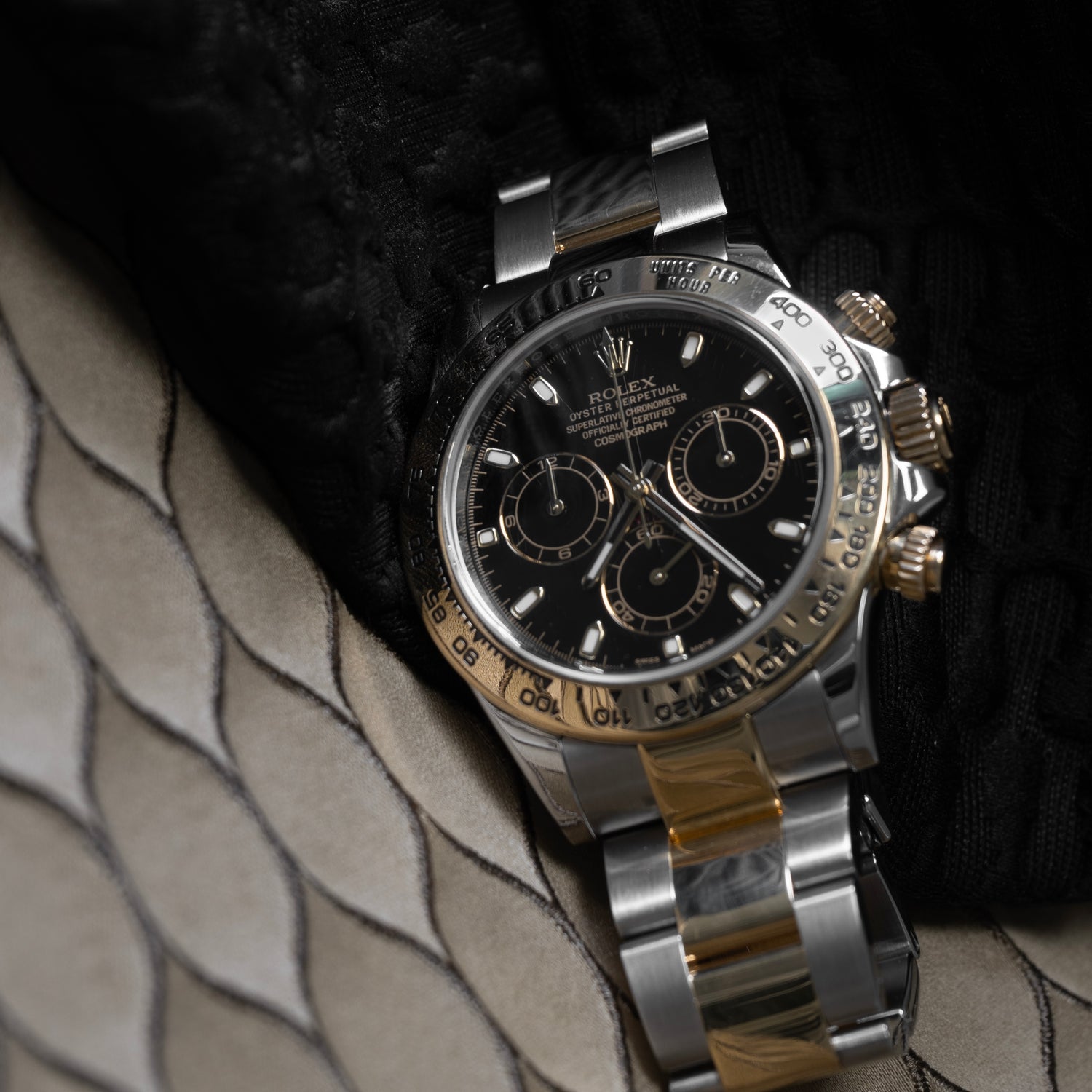
STEP 9
The price tag
A Rolex timepiece is a true work of art. So, if you see something that sounds too good to be true, it’s probably a fake.
We’re talking about your watch’s price tag. Expect to pay a considerable amount for a genuine Rolex watch.
As a guide, proceed with caution if you see a Rolex on sale for less than standard market-prices. Some entry-level Rolex watches include the Air-King, Oyster Perpetual and certain Datejusts. You might be able to pick them up for somewhere between £3000 and £5000.
How to check Rolex authenticity by the serial number
All real Rolex watches have serial numbers. Unfortunately, many fakes do too. It helps to know how to check your Rolex’s authenticity by the serial number.
First up, a bit of background information: Every serial number on a Rolex contains 4-8 characters which could be solely numerical, or could start with a letter. It all depends on the timepiece’s production date. Locate the numbers between the lugs on the side of the case at 6 o’clock, behind the bracelet, or on the Rehaut on newer models after 2008.
Fake Rolex producers usually replicate serial numbers, but they won’t match genuine Rolex codes. They might also lack the laser precision genuine serial numbers are engraved with. The craftspeople at Rolex create finely cut, sharp markings, so if your watch has a serial number that looks dotted or blurred, it’s a sign of an inferior etching technique used by scammers.
To authenticate a pre-owned Rolex, ask the seller for official papers or certificates and check that the serial number on the watch matches that on the documents. If the seller can’t show you these papers, carry out some other checks or take the watch to a trusted dealer to carry out a professional Rolex authentication.
1. Let’s talk bracelets and straps of real Rolex watches
Get to know the straps and bracelets keeping genuine Rolex watches in place.
The quality of every strap or bracelet should be impeccable. A small amount of wear and tear is acceptable in pre-owned watches, but the construction of the materials means excessive damage is unlikely in a real Rolex.
Some of the straps and bracelets you’ll find include:
- Oyster bracelet: The most common bracelet that dates back to 1947. This is a 3-piece link bracelet, available in steel, gold, platinum, titanium or Rolesor (mixed metal).
- Jubilee bracelet: Renowned in the horology world, a Jubilee bracelet is a curvy 5-piece link construction, available in steel, gold or Rolesor.
- President bracelet: A 3-piece link metal bracelet with semi-circular links, available in gold or platinum. Features in the Day-Date and Datejust collections.
- Pearlmaster: Launched in 1992 for the Lady-Datejust Pearlmaster range. Features rounded 4-piece links.
- Leather: Alligator leather ideal for formal events.
- Oysterflex: The newest bracelet option, Oysterflex was conceptualised in 2015 for the Everose Yacht-Master. With a black colour and sporty rubber profile, it is actually constructed with a titanium and nickel-alloy blade covered in black elastomer.
2. The metals of genuine Rolex watches
It’s no surprise Rolex only uses the most exceptional metals it can find, brought together to create timepieces in facilities that are in a class of their own.
In other words, behind its shiny exterior and a brand that gets people talking, are materials that are among the very best.
The metals that define authentic Rolex watches include:
- 904L stainless steel: A steel unlike any others, 904L grade stainless steel boasts superior resistance to corrosion, rust and acids.
- 18k gold: A high-value material that’s highly resistant to tarnishing. The Rolex standard.
- Everose rose gold alloy (18k): A unique blend of rose gold produced in-house to ensure the highest quality.
- 950 platinum: A metal comprised of 95% pure platinum. Called “the noblest of metals” by Rolex.
- Rolesor: Patented by Rolex in 1933, this is the meeting of two metal alloys in a single timepiece.
- Rolesium: A combination of stainless steel and platinum in one watch, first created for the Yacht-Master in 1999.
3. What you need to know about the iconic Oyster case
The Rolex Oyster case is a water-tight case invented in 1926. With an innovative construction making it the world’s first waterproof wristwatch, the Rolex Oyster became an icon that made it across the English Channel on swimmer Mercedes Gleitze’s wrist.
The ever-sporty Oyster Perpetual is built with an Oyster case and 904L Oystersteel, which was specially developed for the brand for its corrosion-resistant capabilities and exceptional sheen.
So how can you tell if a Rolex is a real Oyster Perpetual? Make sure it’s an original Rolex watch with this quick guide:
- Price: The Oyster Perpetual is one of Rolex’s longest-established models. The price generally increases each year and right now, you can expect to pay at least £4000 for one. If you try to buy a new or second-hand Rolex Oyster Perpetual and the cost is much lower, it’s likely a fake.
- Finish: Rolex hand-polishes its Oyster Perpetual watches. The finish should be perfect; any visible imperfections or a case that doesn’t reflect the light beautifully are signs of a counterfeit model.
- Crown: Genuine Rolex Oyster Perpetual watches consist of a screw-down Twinlock winding crown with a double waterproof system. You should see a little dash underneath the Triplock crown, and a coronet on the crown.
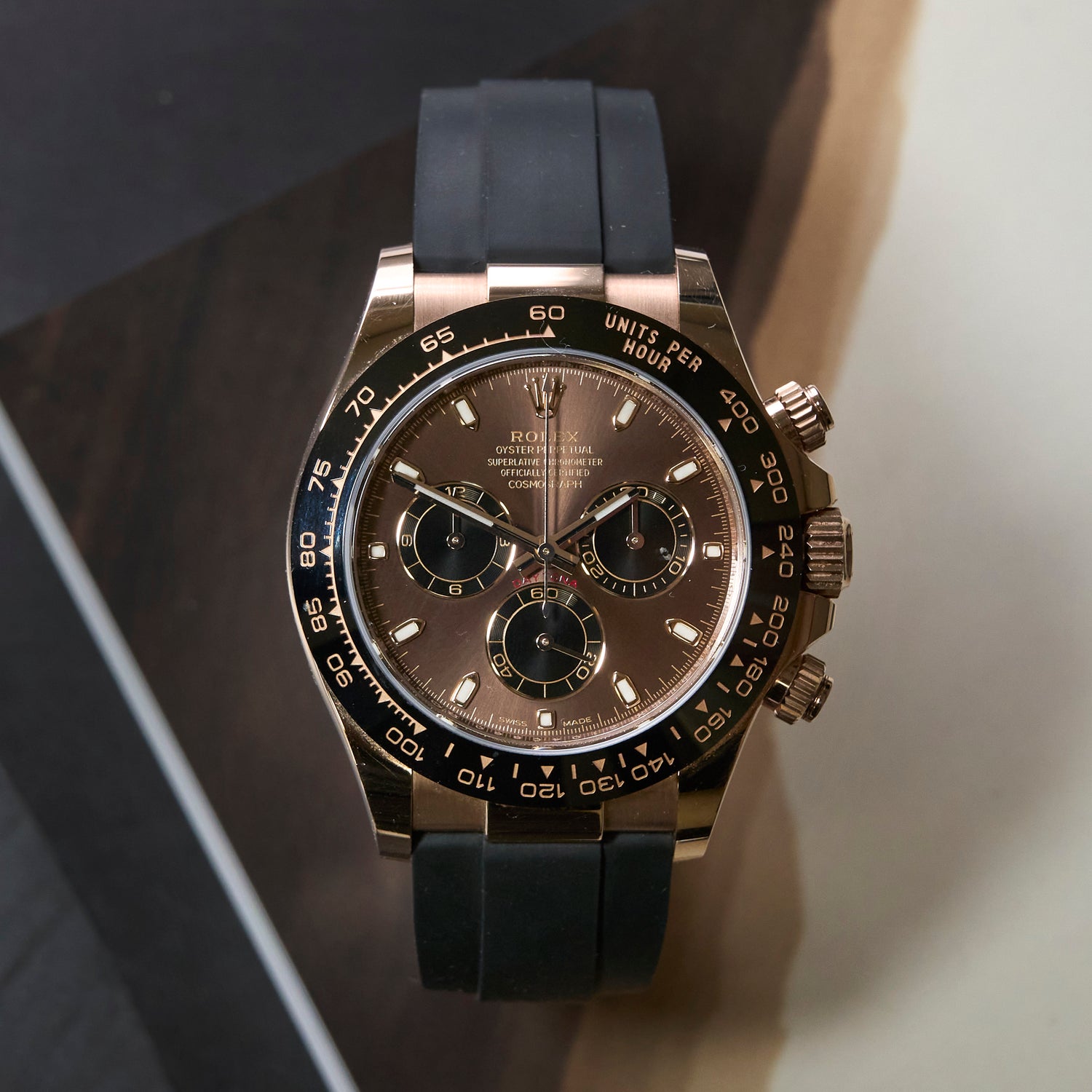
Don’t try this Rolex authenticity check at home
When it comes to the best diving watches, Rolex is at the top of the pack. Or the bottom of the ocean.
The brand focuses on water resistance, with advanced seals that protect against the ingress of water and the ability to withstand high water pressures. Imitations, of course, don’t match up.
When trying to tell if a Rolex is real, submerging the watch is a reliable method, although it’s one we don’t recommend.
If you have a fake Rolex on your hands, this could damage the watch and throw a refund out of the question. Similarly, genuine vintage Rolex watches or timepieces that need a service could fail the test. It’s a potentially expensive authenticity check that you can skip for now.
Ask a professional to examine your Rolex instead.
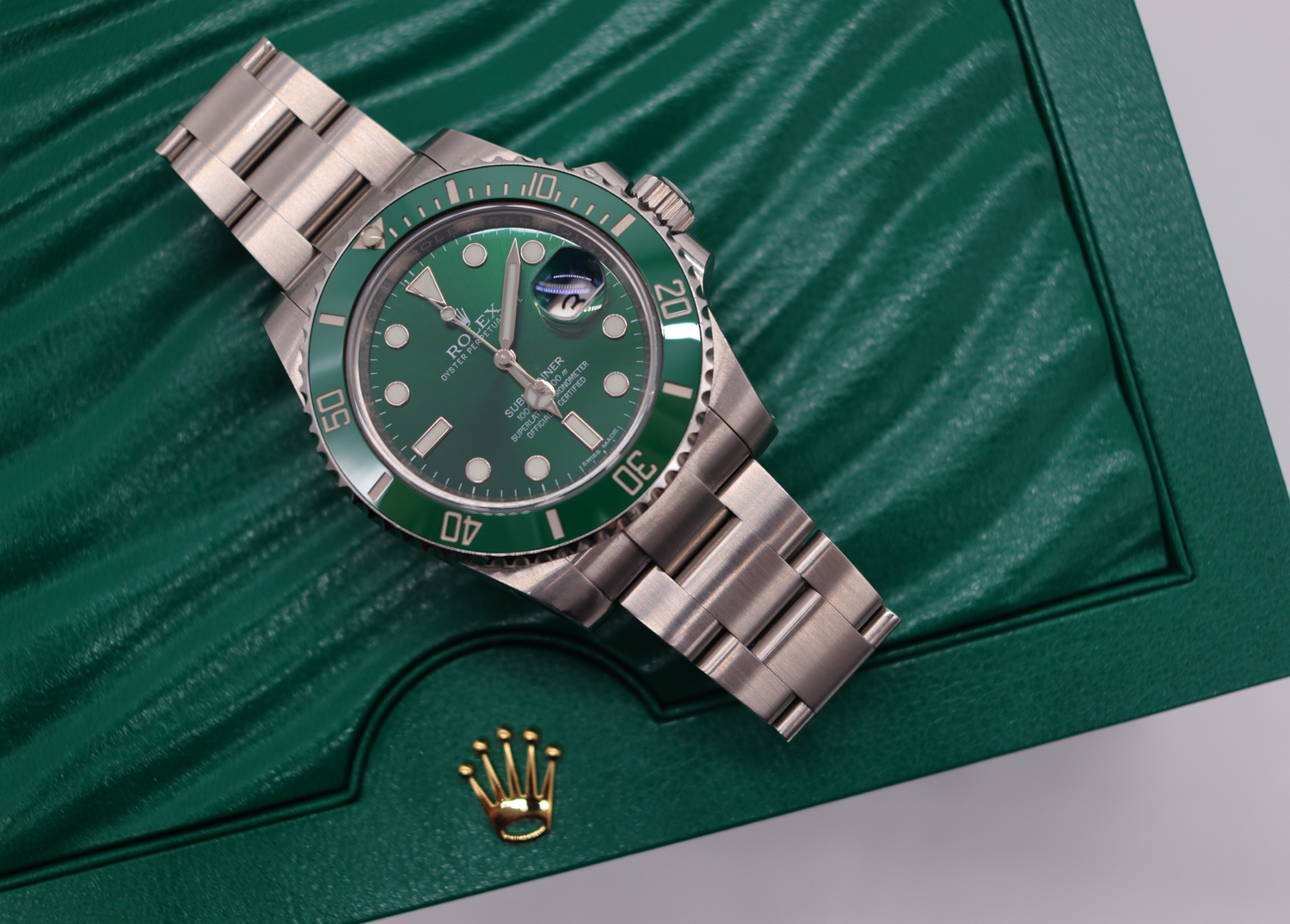
Where to authenticate a Rolex watch in the UK
To be sure you're buying a genuine second-hand Rolex in the UK, only ever purchase from reputable dealers.
However, if you’re still questioning the authenticity of your Rolex, you can take it to a trusted jeweller, such as Trilogy. We’re specialists in luxury watches and can authenticate any Rolex watch quickly thanks to our expertise in the market.
We’re big on counteracting the fake watch market and it’s important that our customers feel confident they’re spending their money on high-quality, high-value items.
Your timepiece is an investment and we know how important it is that you maintain a stellar collection that doesn’t support the counterfeit market. Trilogy’s provides a comprehensive service including authentication, watch register & valuation certificate.
What not to do when you buy a Rolex: Common mistakes & pitfalls
Avoid the following places and approaches when you buy a second-hand Rolex:
- P2P Online marketplaces with no buyer protection such as Facebook Marketplace
- Market stalls at home or abroad
- Buying online without doing any research into the seller. Check their reviews, make sure they have a physical address, look at the rest of their content to see if it looks legitimate, and give them a call if needed.
Buy a Rolex with confidence
When you buy a Rolex watch at Trilogy Jewellers, it comes with an authenticity guarantee, so you know you’re buying a luxury item that’s been meticulously hand-crafted to the finest standards.
Our watches also come with a Trilogy warranty and in most cases, you’ll receive the original box and paperwork.
Book an appointment to visit our Mayfair showroom or call 0203 9298227 to talk to our team.
TRILOGY ON YOUTUBE
Follow Trilogy on YouTube for regular updates and reviews of luxury watches and jewellery.

